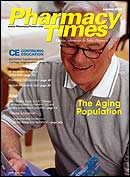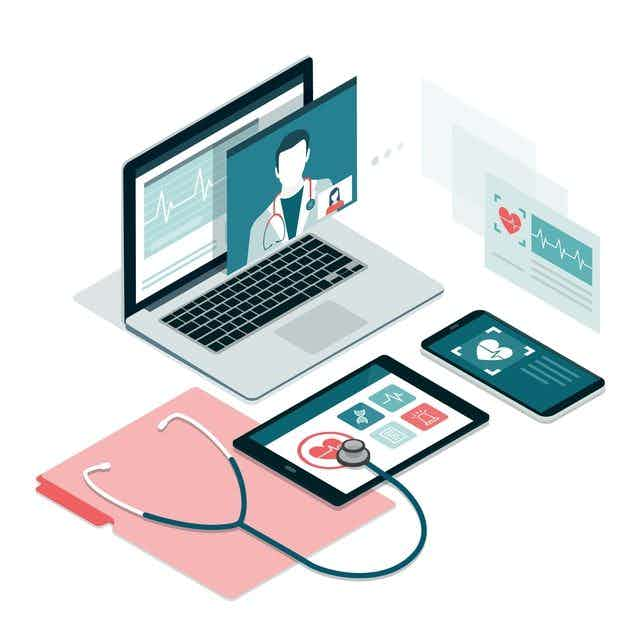Publication
Article
Pharmacy Times
Advising the Elderly on Multiple Medication Use
Author(s):
The elderly are more susceptible to problems with drug therapy, and pharmacists are pivotal in identifying possible drug interactions, contraindications, and incidences of polypharmacy.
Ms. Terrie is a clinical pharmacy writerbased in Haymarket, Virginia.
Results from a survey conductedby the National Council forPatient Education reported thatonly 37% of patients who use nonprescriptiondrugs consult the pharmacist toensure proper selection and use.1 Inaddition, many patients taking prescriptiondrugs also concurrently use nonprescriptiondrugs without first consultingtheir physicians or pharmacists. Theseindividuals may not be aware of possibletherapeutic duplications, contraindications,or drug interactions when somenonprescription and prescription drugsare used concurrently.
The elderly become more susceptibleto problems with drug therapy becauseaging alters both pharmacokinetics andpharmacodynamics, which impacts theselection, dosage, and dosing interval ofmany pharmacologic agents.2,3 Pharmacistsare pivotal in identifying possibledrug interactions, contraindications, andincidences of polypharmacy.
Many Conditions, Various Medications
Individuals aged 65 and older accountfor more than 12% of the population inthe United States, and this percentage isexpected to double by the year 2030.4Because many seniors have multiplechronic medical conditions, they aremost likely to take various medications,including both prescription and nonprescriptiondrugs; therefore, the probabilityof adverse effects increases, includingpotential drug interactions and contraindications.
It is estimated that the elderly accountfor 40% of the nonprescription drugs(including nutritional supplements) soldin the United States.4,5 On average, individualsaged 65 and older take an estimated1.8 nonprescription productsdaily. Nonprescription drug use amongthe elderly is most prevalent in theMidwest among Caucasians andwomen.2 Results from 1 study show thatwomen aged 65 and older take morenonprescription drugs than men, usingan average of 3.8 nonprescription drugs.2Analgesics, laxatives, and nutritional supplementsare the most commonly usednonprescription drugs by the elderly.2
Examples of the most commonlyknown nonprescription drugs responsiblefor interactions among the elderlyinclude nonsteroidal anti-inflammatorydrugs, antihistamines, and antacids.2 Theuse of these drugs, such as nasal andoral decongestants, may exacerbatesome preexisting medical conditions.Also, some in the elderly populationappear to be more sensitive to certainclasses of drugs, such as anticholinergicdrugs.2
Other medication problems affectingthe elderly include dosing considerationsdue to hepatic or renal impairments,which may require a dosing decrease orincrease in dosing intervals.2,3 Some seniorsalso may have difficulty swallowingcertain dosage forms or have issues withdexterity due to conditions such asarthritis. Pharmacists can assist patientsby making recommendations, such as aliquid or chewable dosage form, if applicable,or easy-to-open containers to suittheir individual needs.
Benefits of Counseling
Although counseling every patientabout nonprescription drug use is not arealistic option in the daily duties of apharmacist, when a patient does seekadvice regarding a nonprescription product,pharmacists should seize everyopportunity to ensure that the patient isthoroughly counseled on its proper use,as well as determine the appropriatenessof therapy. Pharmacists also shouldfind out if the request for a nonprescriptionproduct is to treat a side effect ofanother medication.2 Particularly amongthe elderly, when a patient is receiving aprescription medication, pharmacistsshould inform him or her about possibledrug interactions and contraindicationswith any applicable nonprescriptiondrugs when warranted.
Patients also should be reminded toalways consult their primary health careprovider before taking any nonprescriptiondrugs—including nutritional supplements and herbal medications—andwhen in doubt, to ask their health careprovider. In addition, seniors are morelikely to see several health care providersdue to multiple medical conditions, so itis imperative that they provide each ofthem with an updated, comprehensivelist of their medications. This list shouldinclude prescription and nonprescriptiondrugs, as well as nutritional and herbalsupplements, and be brought to eachdoctor's visit. Furthermore, encouragingthe use of a single pharmacy also canminimize possible drug interactions andmedication duplications. See Table foradditional reminders.
As more and more of the elderly populationbecome proactive about theirhealth, it is important to empower themwith necessary information about theirdrug therapy so that they make smartchoices to improve their quality of life.
Table

References
- National Council of Patient Information and Education. Uses and Attitudes About Taking Over the Counter Medicines: Findings of a 2003 National Opinion Survey. www.bemedwise.org/survey/survey.htm.
- Isetts, B, Brown, L. Patient Assessment and Consultation. In: Berardi R, Kroon L, Newton G, et al, eds. Handbook of Nonprescription Drugs. 15th Edition. Washington, DC: American Pharmacists Association; 2006:29-30.
- Basics of Geriatric Care: Clinical Pharmacology. In: Beers, M, ed. The Merck Manual of Geriatrics. Rahway, NJ: Merck Publishing; 2000:Chapter 6.
- Lam, A, Bradley, G. Use of Self Prescribed Nonprescription Medications and Dietary Supplements Among Assisted Living Facility Residents. Medscape Web site. www.medscape.com/viewarticle/549257.
- Conroy, M. Polypharmacy: Pandora's Medicine Chest? Geriatric Times. 2000. www.cmellc.com/geriatrictimes/g001028.html.










